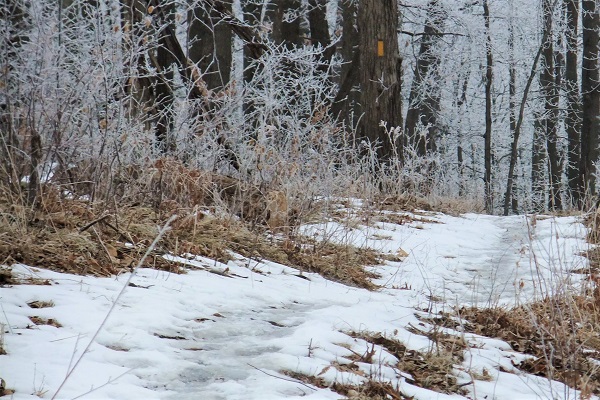
Icy trail conditions like these along the popular Straight Lake Segment of the Ice Age National Scenic Trail call for winter traction devices! Photo by Dave Caliebe.
Don’t put summer fun in jeopardy by taking an otherwise preventable fall on an icy trail.
Many favorite, well-loved, and well-used segments of the Ice Age National Scenic Trail become extremely icy during the late winter and early spring.
Snowy trails, packed down by many feet, turn to ice and become even more dangerous as balmy daytime temperatures lead to thawing and evening temperatures dip back into freezing range.
To be prepared for potentially hazardous hiking, the use of ice cleats and hiking poles (with rubber tip removed) is strongly recommended for safe spring hiking (which in some areas extends well into “Muddy March” and even mid-April).
Winter Traction Devices:
Intrepid hikers, who want to stay active and hike during “icy season” out on the Ice Age Trail, can run a Google search for “Ice Cleats for Hiking” or “Winter Traction Devices for Hiking” which will yield a variety of options.
Two websites: Hiking-for-Her.com and ActiveJunky.com offer a quick introduction to the difference between crampons, cleats, and microspikes.
From folks in the know at the Ice Age Trail Alliance, Kahtoola micro-spikes is an acknowledged proven performer for icy hiking.
Hiking Poles:
Trekking poles will certainly offer extra stability and can help keep you upright on an icy trail. OutdoorGearLab.com offers a quick review of options.
Support Friends of the Trail:
While you can certainly make your purchases online, we encourage you to support local outdoor retailers – REI, Fontana Sports, or Clearwater Outdoors – who generously fund Ice Age Trail Alliance activities benefiting the Ice Age Trail.
Consider checking out REI Winter Traction Devices and Hiking Poles.
Happy hiking!
